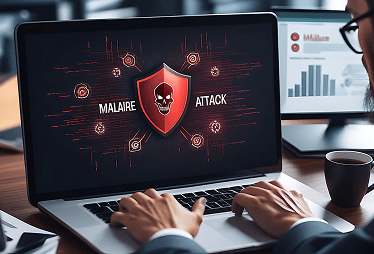The cybersecurity landscape is constantly evolving as hackers adopt more sophisticated techniques and leverage new technologies to launch attacks. In 2025, businesses, governments, and individuals face an ever-growing number of threats, many of which are powered by artificial intelligence, automation, and advanced social engineering tactics. To stay protected, it’s essential to understand the latest risks and prepare for them. Here are the top 10 emerging cybersecurity threats to watch in 2025.
1. AI-Powered Cyber Attacks
Cybercriminals are increasingly using artificial intelligence (AI) to create advanced malware, automate phishing campaigns, and bypass security defenses. AI can adapt in real-time, making attacks faster and more effective than ever before. Organizations need to use AI defensively to combat these AI-driven threats.
2. Deepfake and Voice Spoofing Scams
Deepfake technology is becoming more convincing and easier to access. In 2025, hackers are expected to use AI-generated videos and voice clones to impersonate executives, steal money through business email compromise (BEC), and manipulate public opinion.
3. Ransomware-as-a-Service (RaaS) 2.0
Ransomware attacks are evolving, with Ransomware-as-a-Service becoming more accessible on the dark web. Hackers no longer need technical expertise—they can rent ransomware kits and launch attacks against companies, targeting critical infrastructure and demanding multi-million-dollar payments.
4. IoT Device Exploits
With the rise of smart homes, connected cars, and wearable devices, Internet of Things (IoT) vulnerabilities are growing rapidly. Many IoT devices lack strong security features, making them easy targets for hackers who can exploit them to steal personal data or launch large-scale DDoS attacks.
5. Quantum Computing Threats
Although still in its early stages, quantum computing poses a serious future threat to traditional encryption methods. By 2025, advancements in quantum computing may start to weaken current cryptographic standards, forcing organizations to adopt post-quantum encryption.
6. Cloud Security Risks
As businesses continue to shift to cloud platforms, misconfigurations, weak access controls, and data leaks remain major risks. Attackers are targeting cloud environments to exploit sensitive data and gain unauthorized access to enterprise systems.
7. Supply Chain Attacks
In 2025, supply chain attacks will become even more frequent and damaging. Hackers exploit third-party vendors and software providers to infiltrate larger organizations. The SolarWinds attack was a warning—this vector remains a growing concern.
8. Critical Infrastructure Attacks
Cyberattacks on critical infrastructure, such as power grids, water systems, and transportation, are increasing. Nation-state actors and advanced persistent threats (APTs) are targeting these sectors with the potential to cause widespread disruption.
9. Social Engineering 2.0
Phishing emails are becoming harder to detect due to AI-generated content that mimics real communication styles. Attackers are using multi-channel approaches, including SMS (smishing) and voice calls (vishing), to trick users into revealing sensitive information.
10. Data Poisoning Attacks on AI Systems
As more businesses rely on AI and machine learning models, data poisoning—where attackers feed malicious or misleading data into AI systems—poses a new risk. This can manipulate AI outputs, leading to flawed decisions in security, finance, or healthcare.
How to Stay Protected in 2025
To combat these emerging threats, organizations and individuals must take a proactive approach to cybersecurity. This includes adopting zero-trust architectures, implementing multi-factor authentication (MFA), conducting regular security audits, and investing in AI-driven security solutions. Continuous employee training on phishing and social engineering is also critical, as human error remains one of the weakest links in cybersecurity.
Final Thoughts
The cyber threat landscape of 2025 is more complex and dangerous than ever before. As attackers evolve their methods, it’s vital for businesses and individuals to stay ahead by understanding the latest risks and strengthening their digital defenses. By combining advanced technology with strong cybersecurity practices, we can build a safer online environment in the years to come.

